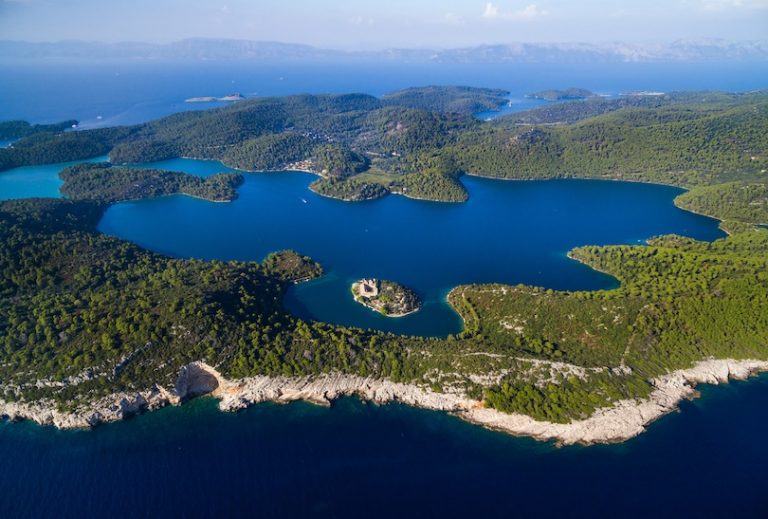
What can you see in Makarska and airport taxi
Croatia attractions and airport transfers? Diocletian’s Palace in Split was built by the Roman emperor Diocletian in preparation for his retirement. He lived out his retirement in his palace tending to his vegetable gardens. After the Romans abandoned the site, the Palace remained empty for several centuries. In the 7th century nearby residents fled to the walled palace to escape invading barbarians. Since then the palace has been occupied, with residents making their homes and businesses within the palace basement and directly in its walls. Today many restaurants and shops, and some homes, can still be found within the walls.
With a history dating back to the time of the ancient Romans, the small town of Porec is now the most popular holiday destination in Istria. The oldest parts of the town are from the 4th century, but Porec is most famous for being home to a 6th-century basilica, which features gem-studded Byzantine mosaics and is a UNESCO World Heritage Site. However, many visitors are drawn here by the beaches; Porec boasts more than 10 km of coastline, with beaches ranging from rocky to pebbly to sandy. The area also offers more than 250 km of cycling trails of various lengths and difficulties.
Croatia’s most photographed beach has to be the remarkable Zlatni Rat (Golden Horn, or Golden Cape). Located in Bol on the south coast of Brac, this unusual landform, known as a “spit,” is made up of fine pebbles and runs 500 meters perpendicular to the coast. Depending on local winds and currents, it moves and changes shape from season to season. Backed by a cluster of pine trees offering shade and overlooked by the rocky heights of Vidova Gora mountain, it is lined in summer with sunbeds and umbrellas. Widely considered one of Europe’s top beaches, the sea is warm enough to swim from June through September, and some people even manage to stretch the bathing season out to May and October, too. Extra attractions on the beach include water sports such as paddle boats, sea kayaks, and banana boat rides. Zlatni Rat is also Croatia’s top windsurfing destination. Brac is accessible by ferry and catamaran from Split. See more information at taxi Makarska.
Not all elements of Nature manage to entice everyone. For example, some may like to watch stunning waterfalls while some others may prefer to gaze through a green blanket while some others may want to tune their souls with the silence of Nature. Whatever the reason be, Krka National Park is one of the best places to go to Croatia. The primary attraction of this park is a wide range of stunning waterfalls, the best of which is Skradinski Buk Falls. Apart from this stunner, there is a host of diversified wildlife that can entice almost anyone at any time. Some human touch can be found in the form of secluded monasteries too. The 200-meter deep canyon through which the Krka River flows is yet another famous tourist destination in Croatia.
The Festival of Dalmatian Klapa takes place every July in Omis, with numerous concerts celebrating this traditional type of Dalmatian singing. Makarska kicks into life from June until September. Occurring almost (but not strictly) every week in July and August, Makarska’s Fishermen’s night sees a sprightly folk festival animate the waterfront. A celebration of local culture specifically for visitors, it’s a great opportunity to snag some fresh fish and seafood, washed down with local Croatian wine. The festival sees people milling about in traditional costume and attendees participating in fun, simple games like balancing on a beam to the soundtrack of Dalmatian music. Read even more details on cheapridetransfers.com.
Recent Posts
Tags
Categories
Archives
- March 2024
- February 2024
- January 2024
- December 2023
- November 2023
- October 2023
- September 2023
- August 2023
- July 2023
- May 2023
- April 2023
- March 2023
- February 2023
- January 2023
- December 2022
- November 2022
- October 2022
- September 2022
- August 2022
- July 2022
- June 2022
- May 2022
- April 2022
- March 2022
- January 2022
- December 2021
- October 2021
- September 2021
- August 2021
- June 2021
- May 2021
- April 2021
- March 2021
- February 2021
- January 2021
- December 2020
- October 2020
- September 2020
- August 2020
- July 2020
- June 2020
- May 2020
- April 2020
- March 2020
- February 2020
- January 2020
- December 2019
- November 2019
- October 2019
- September 2019
- August 2019
- July 2019
- June 2019
- May 2019
- April 2019
- March 2019
- February 2019
- January 2019
- December 2018
- November 2018
- October 2018
- September 2018
- August 2018
- July 2018
- June 2018
- May 2018
- April 2018
- March 2018